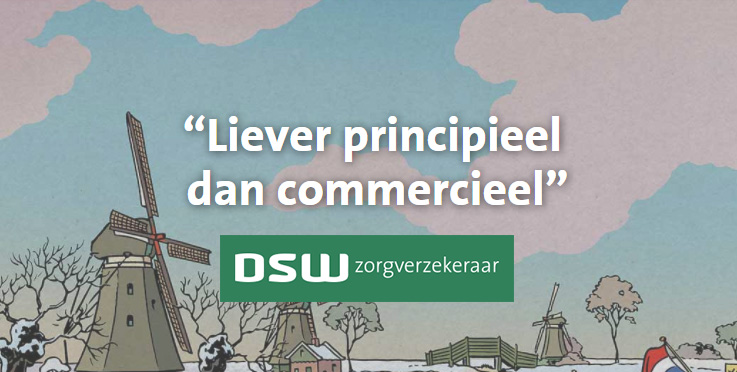Summaries per chapter with the 10th Custom UL edition of Current Psychotherapies by Wedding & Corsini - Bundle
What psychotherapeutic views are there? - Chapter 1
- When and how did psychotherapy start?
- When and how did the research into unconscious mind begin?
- What is the connection between biology and psychotherapy?
- What is the connection between culture and psychotherapy?
- What are the issues with evidence-based treatments?
- Why is the research on psychotherapy so important?
- What makes someone a good therapist?
Different views of psychotherapy have undergone major changes, the visions of psychotherapy have completely changed and new visions have emerged.
There are different types of psychological treatments that started in the twentieth century, but these have gone through drastic changes which led to improvement of mental health practices.
When and how did psychotherapy start?
People have been dealing with mental problems for as long as we know. They have therefore always been looking for solutions. An example is the ''ceremonial ritual'' which had non-scientific basis. On the other hand, the Secularist psychological treatment was scientific. The Hellenistic treatments assumed that the brain was the starting point of all mental problems.
When and how did the research into unconscious mind begin?
Scientific research into the unconscious probably started in the seventeenth century under the leadership of Leibniz.
In the nineteenth century, the ideas of Mesmer and Schopenhauer were leading. They influenced Freud, Adler and Jung. Mesmer was considered to be the founder of hypnotherapy. In addition, he thought that behavior was formed by the unconscious.
In the nineteenth century, three movements emerged to explain how the mind works. These are discussed in the following sections.
Natural science empiricists
Fechner and von Helmholtz were important scientists in the nineteenth century. They conducted research in cognitive science. Fechner investigated the sleep-wake rhythm, with special attention to dream sleep. He also researched the topic of how much psychological stimulation is required to transfer ideas from the unconscious to the conscious mind (contemporary working memory).
Von Helmholtz discovered the phenomenon ''unconscious inference'' - the unconscious representation of an object, constructed by knowledge from the past.
Fechner and von Helmholtz's ideas are called the ''organicist tradition''. They formed the basis for Freud's ideas. One of the organicists, Kraeplin, had been looking for solutions to mental illness for years. He started classifying problems - the predecessor of the current DSM.
The psychologist-philosophers
The development of psychotherapeutic treatments has been influenced much more by philosophers than by scientists. Schopenhauer published in the early nineteenth century a work that was regarded as the basis of field of psychology. His idea was to treat mental disorders in a non-biological way. Schopenhauer's work mainly focused on sexuality and the unconscious.
Carus suggested that the conscious communicates with the unconscious, while the person himself is not fully aware of this process. For instance, in conversations between the therapist and client, both experience transfer and counter transfer. The (unconscious) transfer from the therapist's part already takes place at the first meeting.
Von Hartmann and Nietzsche built on the views of Schopenhauer and Carus. Nietzsche thought that conscious thinking is based on unconscious experience. He stated that people lie to themselves even more than they do to others.
The clinician-researchers
Many discoveries were made in clinical settings during the nineteenth century. These discoveries were related to, among other things, personality psychology and psychotherapy. The researcher, Benedikt, developed a way to treat pathogenic secrets. This became an important part of Jung's analytical psychotherapy.
Psychotherapeutic treatments are subject to constant change. Yet, professionals often stick to the techniques they once learned.
What is the connection between biology and psychotherapy?
When something happens in the environment, the neurobiological pattern in the brain changes. Skills that are sufficiently stored in the brain are difficult to unlearn; education implies permanence. However, skills can disappear as a result of brain damage.
Grawe argued that psychotherapy appears to have its effects through changes in gene expression at the neuronal level. The retrieval of dysfunctional memories from the past does not lead to improvement. Good therapists teach patients not to worry about dysfunctional memories. They help their patients to improve their well-being. The main goal of psychotherapy is neuronal restructuring that helps patients experience positive changes.
The human central nervous system is plastic, which means that environmental changes, however small, affect brain expression.
Tension between theories
There has been tension between supporters of different theories for years. This conflict could be resolved by systematic integration of different variables. Nurture is formed by nature. We are genetically oriented to look for an environment in which we can develop. Different environmental experiences impact our gene expession and influence the development of character traits.
Evolutionary biology and behavioral genetics
Evolutionary psychology is close to behavioral genetics. There are at least 400 different universal traits as a result of our evolved genes.
Pinker states that therapists treat people with the same genetic basis, since all people share unique human background. The events in the patient's life make him different.
What is the connection between culture and psychotherapy?
Multicultural therapy is much more complex than therapy in a homogeneous culture. When the therapist and the patient have different cultural backgrounds, it is important whether the therapist comes from a majority or minority culture.
Language
It is difficult to help patients when you know little about their culture. Language and metaphor use play an important role in this. When the therapist is misunderstood due to cultural differences, this can damage the relationship with the patient. It is therefore important that efforts are made for therapists of a particular culture to help patients of different culture, according to the laws of that culture.
What are the issues with evidence-based treatments?
Patients usually talk with their therapist one time a week. For the rest of the week, patients will experience events in daily life that can undermine the treatment plan. Most events are uncontrollable and unpredictable. In psychotherapy, small, insignificant and inconsiderate additions can make all the difference.
Why is the research on psychotherapy so important?
Much research has been conducted in the past decade into identifying the active mechanisms that help patients change. However, little is known yet. We need to know more about neurobiology and its interaction with the environment to be able to understand these mechanisms.
Issues
To describe the therapeutic outcomes, different situational, somatic and psychological variables need to be considered. By looking at these variables, problems can be divided into classification systems such as the DSM and the ICD. These systems help to see which treatment form is most suitable for the individual.
Hope
In psychotherapy, it is more important to know what works than why it works. Some forms of therapy are easier to describe in a manual than others. Therapies in a manual are therefore not automatically better than other therapies. Handbooks also do not cover everything, because every person is different and experiences different events. Therapeutic judgment is important here.
Industrialization
Psychological treatments based on scientific research are currently the norm. This is also important for reimbursing the costs of psychological therapies.
The performers of psychotherapy
Psychotherapy is an umbrella term for various forms of therapy aimed at improving the well-being of clients. Psychotherapists must work according to the established standards for their profession.
What makes someone a good therapist?
A particular disorder often has a particular treatment that works best, regardless of the psychotherapist's preferences. The therapist must therefore put the client's interests above his own. In addition, research has shown that some therapists treat one type of disorders much better than others. It is unclear what is the reason for that.
There are a lot of personal reasons for students to choose to specialize in a particular area of expertise. Students should therefore focus their professional careers on certain types of problems, as it is not often the case that all types of problems can be treated equally successfully. The student's personality and competences determine which patients can and cannot be treated.
To choose the right treatment for a person, the right diagnosis must first be made. It is therefore important that the therapist has good diagnostic skills.
What is psychoanalysis and in what context should it be seen? - Chapter 2
Psychoanalysis is not the same as Freudian theories. There are different theories and treatment models based on psychoanalytic view. Many of these models therefore show similarities, but there are certainly also differences. Psychoanalysis is based on several basic principles:
People are motivated by wishes, fantasies and knowledge from the unconscious (unconscious motivation).
People are interested in facilitating the conscious knowledge about the unconscious motivation.
Painful or threatening feelings, fantasies and thoughts are avoided.
It is stated that people are ambivalent about change.
The therapeutic relationship is used to investigate the client's self-destructive psychological processes.
The therapeutic relationship is used to bring about change.
The client is made aware that the past and present maintain self-destruction.
What does the client-oriented treatment look like? - Chapter 4
Client-centered therapy originated in 1940 from Rogers' ideas. This psychologist is now considered to be one of the most important psychologists of the twentieth century. Client-centered therapy focuses on the client and their own wishes and thoughts.
When and how is behavioral therapy used? - Chapter 6
Behavioral therapy aims to change factors in the environment in order to change the behavior of the individual and the way in which the individual responds to the environment. Behavior is a broad concept and includes motor behavior, psychological reactions, emotions and cognitions. Most behavioral therapists use a mixture of traditional techniques and CBT. Common qualities of those therapies are:
The goal is behavioral change.
The origin of behavioral therapy lies in empiricism.
It is believed that behavior has a function.
It is about problem behavior that is now causing problems, and not the original problem behavior.
Active form of therapy.
Transparency.
How is cognitive therapy structured? - Chapter 7
Cognitive therapy is based on the idea that people respond to life events through a combination of cognitive, affective, motivational and behavioral responses based on evolution and individual learning. The cognitive system is about the way in which people experience, interpret and give meaning to events. This system works in conjunction with the affective, motivational and physical system to process environmental information and respond accordingly. Improper responses can be due to misconceptions, misinterpretations or dysfunctional, idiosyncratic (personal) interpretations of situations. Cognitive therapy attempts to improve information processing. By adjusting the cognitive system you can also adjust all other systems.
What forms of family therapy are there and when are they used? - Chapter 11
Family therapy offers a form of psychotherapy that takes the context of family into account. Family members are assisted in identifying and changing problematic, maladaptive and repeated relationship patterns. In family therapy, there is often an identified patient (the one who is often thought of as the causative agent of problems within the family) who is perceived as someone who exhibits problem behaviors that are maintained through dysfunctional transactions within the family or between the family and the environment.


















